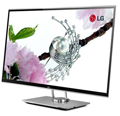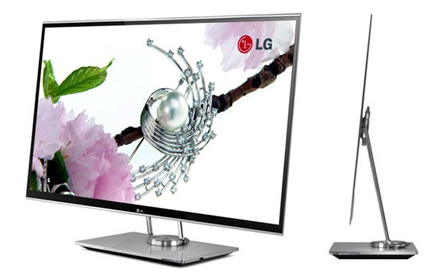KOREA/JAPAN: Are Sony's S-LCD sell-off plans bringing it closer to LG (and OLED TVs)?
Press report suggests Japanese company is increasing its LCD panel purchases from LG, could link up on OLED TVs next year


In an interesting twist on our earlier story about Sony's plans to pull out of its S-LCD joint venture with Samsung, a Korean report suggests the Japanese company is likely to cosy up to Samsung's biggest rival, LG.
The Korea Times, quoting various 'industry executives', says that Sony is increasing the number of LCD TV panels it buys from LG Display, at the expense of those made by S-LCD.
It adds that the two companies seem likely to sign a deal for LG to supply OLED panels some time next year, LG Display CEO Kwon Young-soo having already announced that it plans to launch a 55in OLED TV during 2012.
Quoting a source 'asking not to be identified', the report says that LG Display is shipping increasing numbers of LCD panels to Sony: the source says that Sony bought around 450,000 LG panels for 32in and 37in sets in the first quarter of the year, 340,000 in the second, and over 700,000 LG panels in the July-September quarter.
Year-on-year, that means LG more than doubled the proportion of Sony's LCD panel requirement it fulfils, while the amount of screens being supplied by Samsung has declined by around 15%.
The most recent figures suggest LG supplies some 6.8% of all Sony's LCD panels, but 'a source directly involved with the matter' told The Korea Times that will increase to 10% by the end of this year.
The same source also said, 'LG is interested in a partnership with Sony, which plans to expand outsourcing of even OLED panels and we will approach the firm sometime next year.’
Get the What Hi-Fi? Newsletter
The latest hi-fi, home cinema and tech news, reviews, buying advice and deals, direct to your inbox.
The 'we' in that last quote might just suggest the comment came directly from LG: the Korean company has already said it has held talks with Sony to supply film patterned retarder 'passive glasses' 3D displays to the Japanese company, but apparently that deal is also to be finalised.
OLED TVs are widely seen as the next major revenue source on which consumer electrics manufacturers are staking the profitability of their TV divisions.
Those companies having failed to maintain 3D TVs as premium products for long enough to make decent profits, it's thought many are hoping the allure of large, high-quality super-thin TVs could encourage consumers to pay premium money for TVs using the OLED technology.
Andrew has written about audio and video products for the past 20+ years, and been a consumer journalist for more than 30 years, starting his career on camera magazines. Andrew has contributed to titles including What Hi-Fi?, Gramophone, Jazzwise and Hi-Fi Critic, Hi-Fi News & Record Review and Hi-Fi Choice. I’ve also written for a number of non-specialist and overseas magazines.
